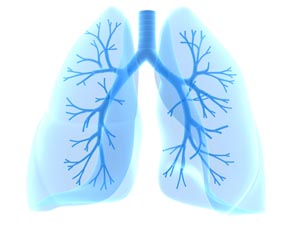 The new method is an improved form of optical coherence tomography, termed micro-OCT (μOCT). In findings published Jan. 22, 2013, in PLOS ONE, μOCT was shown to provide valuable images of four different, difficult-to-measure parameters of airway health.
The new method is an improved form of optical coherence tomography, termed micro-OCT (μOCT). In findings published Jan. 22, 2013, in PLOS ONE, μOCT was shown to provide valuable images of four different, difficult-to-measure parameters of airway health.The four parameters used to assess airway health are the depth of the airway surface liquid, the thickness of the layer of liquid surrounding the cilia (tiny hair-like structures that line and protect the airway), the frequency of the beats of the cilia and the velocity of mucus transport across the airway. These can be measured individually, but each technique has severe limitations, including the inability to measure all four at the same time in any single tissue sample.
“The high resolution of μOCT enables the straightforward measurement of these key functional airway parameters simultaneously and without manipulation of the tissue,” said Steven Rowe, M.D., associate professor in the UAB Division of Pulmonary, Allergy and Critical Care Medicine. “The availability of a single imaging technology that can unify the measurement of these functional parameters of the airway epithelial surface opens the door for many research applications, including drug discovery and understanding basic biology of the lungs.”
The μOCT method features 1-micron resolution and provides live visualization of the phases of the movement of the cilia, which is not achievable by any other current method, Rowe said.
“In order to investigate the pathogenesis, progression or treatment of diseases such as CF and COPD, we must have a tool to quantitatively characterize the functional microanatomy of living cells and tissues without disturbing the process of moving mucus through the airway,” said Guillermo J. Tearney, M.D., Ph.D., of the Wellman Center for Photomedicine at MGH, and a professor of pathology at Harvard Medical School. “The high resolution of μOCT allows many functional parameters to be measured simultaneously and directly, enabling comprehensive study of the mucus clearance apparatus.”
Rowe and Tearney say that μOCT may open the door to better understanding of mucus clearance in the airways of patients with CF and COPD, as well as provide a valuable tool to evaluate potential medications for both diseases. The method may also be adapted for clinical applications in patient care in the near future.